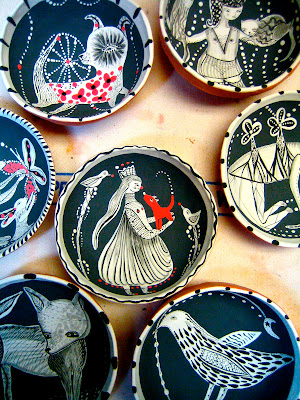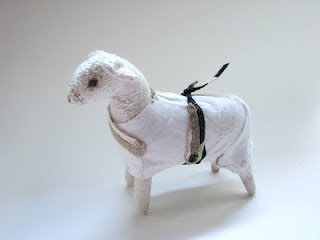
Paulus Berensohn, a dancer, potter and teacher whose slower, quieter, more mindful approach to pottery influenced a generation of artists, died on June 15 in Asheville, N.C. He was 84.
His death, at a hospice, was confirmed by his sister-in-law, Alison Jarvis, who said the cause was a stroke.
Mr. Berensohn was perhaps best known for the book “Finding One’s Way With Clay” (1972), a guide to making pinch pots that blended instructions for making these simple clay bowls with reflections on art, the environment and spirituality, and that advanced the idea that creativity was universal.
He spent nearly 40 years affiliated with the Penland School of Crafts in Bakersville, N.C., about an hour northeast of Asheville, holding pottery and journal-making workshops.
ADVERTISEMENT
A charismatic and striking figure, his lean dancer’s body topped by a snow-white ponytail, Mr. Berensohn was also a magnetic speaker who, with a resonant voice, often recited poetry on the fly and spoke passionately to students about art and environmental issues.
Paul Bernsohn was born on May 14, 1933, in the Sheepshead Bay area of Brooklyn, to Adolph Bernsohn, a women’s clothing designer, and the former Edyth Kalison. His brother, Lorin, was a cellist with the New York Philharmonic. (He later added the “e” to his last name — to give it more panache, he said — and the “us” to his first name.)
Mr. Berensohn, who was dyslexic and often spoke about his condition, attended a number of institutions of higher education, including the Juilliard School in New York and later Bennington College in Vermont. He studied dance at both schools.
After leaving Bennington without a degree, he moved back to New York City, where, he said, he took classes with Merce Cunningham and was used as a demonstrator by Martha Graham when she taught classes.
In the early ’50s, Mr. Berensohn made a short but life-changing trip to the Land commune, a community of artists near the Hudson River town of Stony Point, N.Y., made up of graduates and faculty from the experimental Black Mountain College in North Carolina. At the Land, he saw Karen Karnes, a ceramist, at work at a kick wheel, and her artistry and movement inspired him to take up the craft.
“I thought, that’s a dance to learn,” Mr. Berenson told the Smithsonian Archives of American Art in an oral history interview in 2009.
At the Land, Mr. Berensohn also met M. C. Richards, an influential potter and poet, and followed her to the Haystack Mountain School of Crafts in Deer Isle, Me., where he enrolled in her pottery workshop. The two developed a lifelong companionship, and during his time at Haystack Mr. Berensohn began to develop his philosophy of ceramics as a noncommercial enterprise that can foster human development and unlock human potential.
In the early 1960s, Mr. Berensohn taught crafts and pottery at Pendle Hill, a Quaker retreat in Wallingford, Pa., and at Swarthmore College, before buying a farm near Scranton, Pa., in 1965. The farm, which later became known as the Endless Mountains Farm, operated as an artists’ colony that was cooperatively owned by writers and artists like Ms. Richards, Remy Charlip and Burt Supree.
Mr. Berensohn began teaching workshops at the Penland School of Crafts in the late 1960s. His experiences there would form the basis for “Finding One’s Way With Clay.”
By the late ’70s, Mr. Berenson had turned to tapestries as a form of therapy after a cancer scare (it turned out to be an intestinal illness) left him too exhausted to make pottery. In 1979, at Greenwich House Pottery in Greenwich Village, he exhibited his fiber work, which a review in The New York Times called a “splendid blend of line and color, sparkling with glints of metallic yarn and undulating with sudden energetic curves.”
In addition to his sister-in-law, Mr. Berensohn is survived by a niece.
Mr. Berensohn was an early proponent of deep ecology, an environmental movement that values all living beings equally, and he became more vocal about environmental issues as he grew older. For decades, he said, he did not fire his pinch pots but rather placed them in the forest to melt back into the earth.
In his later years he continued to advance the idea that money ought not be the goal of the creative process. He championed the creative potential of the average person. At a young age, he said, he developed a “desire to de-professionalize my interest in art.”
“I am very interested in the behavior of art rather than the achievement of art,” he told The Juilliard Journal in 2010. “I see all the arts as apprenticeships for the big art of our lives.”
Correction: June 23, 2017
An earlier version of this obituary misspelled part of the name of a Quaker retreat where Mr. Berensohn taught crafts and pottery. It is Pendle Hill, not Pendel Hill.
An earlier version of this obituary misspelled part of the name of a Quaker retreat where Mr. Berensohn taught crafts and pottery. It is Pendle Hill, not Pendel Hill.



Comments